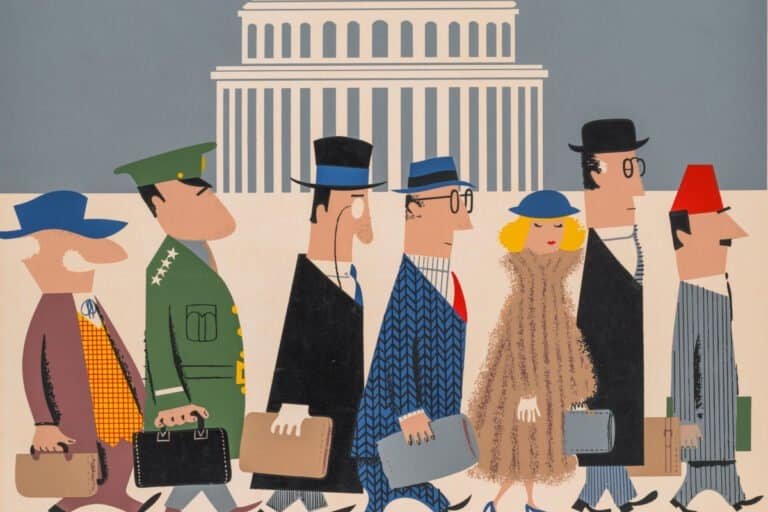Handling Conflicts in Multinational Corporations
Mahatma Gandhi once said, “In a gentle way, you can shake the world.” In the complex world of multinational corporations, learning to solve conflicts is key. It can lead to positive changes, improving team work and global image.
These companies deal with big challenges like different cultures and languages. This often leads to conflicts. Data shows that 90% of top bosses say language issues cause misunderstandings. And 30% say these issues lead to losing business. A study by McKinsey & Company found diverse teams can do up to 35% better than teams with only one type of person.
Solving conflicts helps ease tensions and makes the most of multicultural teams. It boosts innovation and teamwork. Good conflict management can make teams more productive and happy. It also protects a company’s good name and keeps employees from leaving.
Key Takeaways
- 90% of executives reported that language barriers led to misunderstandings within MNCs, affecting business outcomes.
- Diverse teams in MNCs can outperform homogeneous teams by up to 35% according to McKinsey & Company.
- Effective conflict resolution in diverse work environments is key to leveraging team potential and innovation.
- Multinational corporations face unique challenges including navigating diverse cultures, languages, and expectations.
- Implementing robust conflict management strategies significantly boosts productivity and morale while mitigating reputational risks.
The Importance of Conflict Resolution in Multinational Corporations
Effective conflict resolution strategies are key in multinational corporations. They boost productivity and morale. Research shows that 90% of executives say language barriers cause misunderstandings, leading to losses. Handling these conflicts helps manage global team differences, ensuring smoother operations and less downtime.
Impact on Productivity and Morale
Conflict resolution makes multinational corporations more productive. It encourages open talks, better understanding, and keeps emotions in check at work. Skills like active listening, empathy, and being assertive stop disputes from getting worse. They keep the work environment positive.
In fields like litigation, criminal justice, and human resources, these skills are very important. They help build strong relationships, meet goals, and bring new insights. This leads to team members being more committed. Good conflict management is key for team unity and reaching company goals.
Reputational Risks
Ignoring conflicts can turn into big problems that harm a company’s reputation. Multinational corporations have diverse teams, which can lead to mistakes and emotional issues. Using strong conflict resolution strategies helps avoid damage to the company’s image.
It promotes respectful talk and stops misunderstandings and cultural mistakes. It makes sure everyone feels important and heard. This protects the company’s global image and helps manage global team differences.
By focusing on conflict resolution, multinational corporations boost productivity and morale. They also protect their reputation. This makes conflict resolution a vital part of managing global teams.
Identifying Common Sources of Conflict in Global Teams
Knowing what causes conflict in global teams is key to working well together. Global teams face special challenges that can slow them down and make it hard to get along. We’ll look at three big reasons for conflict in these teams.
Communication and Language Barriers
Communication gaps are a big problem in global teams. When people speak different languages, they might not understand each other. This can lead to mistakes and hurt the team’s work.
A study by the Harvard Business Review found that bad communication is a top cause of conflicts at work.
Also, not having good ways to talk to each other can make things worse. It’s hard for team members to see things from each other’s point of view.
Conflicting Working Styles
Different work styles are another big cause of conflict. People from various cultures may do things differently. This can cause tension as they try to work together.
For example, some might focus on getting things done fast, while others care more about listening to the market. These differences can lead to disagreements.
Personality traits also matter. Type A people tend to be more in charge and direct, which can lead to more conflicts. It’s important to understand and manage these differences to reduce team tension.
Cross-Border Collaboration Challenges
Working together across borders and time zones brings its own set of problems. These issues can slow down projects and make it hard to keep things running smoothly. In companies like Global ABB Inc., where people work for several bosses, making decisions can be tough.
To overcome these challenges, leaders need to know about the different cultures and values in the team. They should use strategies that bring everyone together and make the team work as one.
By tackling these common conflicts, big companies can make their global teams stronger and more productive. This helps with working together better and boosts the company’s success.
Effective Conflict Resolution Strategies for MNCs
Dealing with conflict in global companies is harder than in local ones. It’s key for MNCs to use good conflict solving strategies to keep the workplace cooperative and productive. These strategies must consider the culture of the country and the company, as well as the person solving the conflict. Here, we look at some methods that can help solve conflicts in global teams.
Active Listening and Open Communication
Listening well and encouraging open talk are key to solving conflicts in MNCs. This stops misunderstandings and lessens tension among team members. Listening fully means really paying attention and understanding what the speaker says. It helps solve problems better.
Open communication makes sure everyone feels heard and valued. This lowers the chance of small issues turning into big ones.
- Active Listening: Makes sure everyone’s voice is heard and understood, leading to better problem-solving.
- Open Communication: Helps with clear and honest talks, preventing misunderstandings.
Mediation and Negotiation Techniques
Mediation and negotiation are key to solving differences and finding common ground in MNCs. Mediation uses a neutral person to help both sides agree on a solution. Negotiation is when people talk directly to find a middle ground. These methods are important for solving conflicts without hurting the team’s unity.
- Mediation: Uses a neutral person to help find a fair solution.
- Negotiation: Helps people talk directly to find common ground, promoting teamwork and understanding.
Managing Differences in Global Teams Through Corporate Team-Building
Corporate team-building is key in handling differences in global teams. It helps teams deal with cultural differences and communication gaps. This makes for more inclusive teams.
Encouraging Open Communication
Open communication is vital in team-building. It makes team members feel safe to share their thoughts and ideas. This helps overcome language barriers and clear up any misunderstandings.
Activities like cultural exchange events and diversity training help a lot. They make sure everyone can communicate well.
Breaking Down Language Barriers
Language barriers are a big challenge in global teams. Team-building activities that improve communication skills can really help. Things like active listening and clear speaking are key.
These activities not only help bridge language gaps. They also make sure everyone feels important and understood in the team.
Role of Leadership in Conflict Management
Leaders are key in managing conflicts in big companies. Their actions and attitudes shape team dynamics and workplace peace. Good leadership in conflict management solves disputes and turns them into chances for growth and new ideas.
Setting the Tone for Conflict Resolution
Leaders start by setting a positive tone for solving conflicts. They set clear rules for behavior and communication to stop conflicts from getting worse. It’s important to make a safe space where everyone feels safe to share their concerns.
According to the CPP Global Human Capital Report, 76% of people found conflicts had positive outcomes, like better understanding and stronger relationships. This shows how crucial it is for leaders to set the right tone for solving disputes.
- Standards of behavior set by leadership help in preventing escalations.
- Safe space for employees to voice concerns boosts trust and transparency.
- Positive conflict resolution culture leads to productive outcomes.
Training and Empowering Leaders
Training leaders in conflict management is vital for a peaceful workplace. Programs like MIT Technology Leadership and Innovation by MIT xPRO, or the Executive Programme in Leadership & Management by IIM Calcutta, teach leaders how to handle disputes well. By giving leaders ongoing education and training, they can mediate and solve problems successfully.
By focusing on empathy, transparency, and listening, leaders can create a culture that values open dialogue and respectful talk.
- MIT Technology Leadership and Innovation by MIT xPRO
- Executive Programme in Leadership & Management by IIM Calcutta
- ISB Leadership in AI by Indian School of Business
The CPP Global Human Capital Report shows that 33% of people reported better working relationships and 21% saw higher team performance because of conflict. This proves the value of training and empowering leaders to manage conflicts well.
In summary, proactive leadership in conflict management is crucial for a productive and peaceful workplace in big companies. By setting the right tone and training leaders, companies can turn conflicts into chances for growth and unity.
The Impact of Cultural Differences on Conflict
In today’s global world, companies often deal with different cultures. It’s key to understand how cultural differences impact conflicts in the workplace. This helps make a place where everyone can do well.
Understanding Cultural Variations
Different cultures bring new ideas but can also cause confusion if not handled right. For example, Finns like to speak straight to the point, while people from India might be more indirect. Knowing these cultural variations can help avoid misunderstandings.
Adapting Conflict Resolution Methods to Cultural Contexts
It’s important to adjust how we solve conflicts to fit the culture. Not doing this can hurt work performance and team spirit. Companies with workers from many countries need to use flexible methods that respect these differences.
For instance, in some cultures, respect for authority is big. This affects how people take and give feedback. Using these cultural facts can build respect and understanding. This leads to better ways of solving conflicts.
Cross-Cultural Negotiations and Dispute Resolution in International Companies
In the complex world of global business, knowing how to negotiate across cultures is key. It’s important to understand and use cultural differences to improve negotiations and solve disputes.
Techniques for Successful Cross-Cultural Negotiations
Good cross-cultural negotiations mean knowing how different cultures work. For example, a study looked at over 7,000 people from more than 30 countries. It found that Japan and India value social norms a lot, while the U.S. and Brazil are more relaxed. These differences affect how we negotiate.
- Recognize Cultural Norms: Knowing if a culture is strict or easy-going helps with negotiation plans.
- Adapt Communication Styles: It’s important to know what communication methods work best, like email, phone, or meeting face-to-face.
- Timing and Punctuality: People from strict cultures are very punctual, while those from more relaxed cultures might be more flexible.
Leveraging Multicultural Perspectives for Dispute Resolution
Using different cultures to solve disputes is crucial in international companies. About 69% of big companies struggle with cultural differences in negotiations and solving conflicts.
- Harnessing Diverse Viewpoints: Mixing different cultures leads to more creative solutions and better conflict resolution.
- Training and Development: Teaching cross-cultural communication can make teams better at solving disputes.
- Utilizing Cultural Intelligence: People who are good at adapting to different cultures do better in negotiations and work better with others.
With these strategies, international companies can improve their negotiations and solving disputes across cultures. This leads to smoother operations and a happier workplace.
Strategies for Resolving Conflicts in Global Corporations
It’s crucial to have good strategies for resolving conflicts in global corporations. This keeps the workplace peaceful and efficient. With companies working across the world, solving conflicts quickly helps the company’s money matters. It makes operations smoother and more successful.
Resource nationalism often leads to conflicts in global companies. For example, the 1970s OPEC oil crisis showed how big issues can happen. Bolivia and Venezuela taking control of their natural resources caused problems with foreign companies too.
This fear of losing control stops important foreign money from coming in. This makes things more expensive and less competitive worldwide.
Many companies now use alternative dispute resolution (ADR) to solve these problems. Effective operations like mediation and arbitration became popular in the 1970s. They were seen as quick ways to fix workplace issues. This led to the creation of systems to manage conflicts inside companies.
More lawsuits about work in the 1970s and 1980s made ADR more popular. Scholars in the 1990s found that how a company works is key to managing conflicts. This “strategic theory” says solving conflicts smartly is important to stay ahead in the global market.
With more people like over 155,000 angel investors and 50,000 venture capitalists around the world, it’s vital to keep conflicts low. Sites like FasterCapital help by covering some costs and offering big business packages. This shows how important it is to handle conflicts well. Companies in big money projects like real estate and movies really need good conflict management to protect their investments and keep things running smoothly.
So, using these strategies for resolving conflicts in global corporations can make operations better, help companies grow, and boost productivity overall.
Technological Tools to Aid Conflict Management in Multinational Organizations
In today’s fast-paced tech world, big companies are using technological tools to handle conflicts better. These tools make it easy for teams spread out across the globe to work together. This leads to more innovation and growth.
Virtual Collaboration Platforms
Virtual collaboration platforms are key in today’s tech world. Companies like Buffer and Automattic use tools like Slack and Zoom to keep their teams connected. These tools break down communication barriers and create a place for solving problems together.
- Slack: It helps with quick messages, managing projects, and sharing files, making sure everyone is in sync.
- Zoom: It lets teams have face-to-face meetings online, which helps in understanding each other better.
Communication and Conflict Resolution Apps
Conflict resolution apps are also crucial for handling disputes. They have AI chatbots, virtual mediation tools, and training on cultural differences. These tools help solve conflicts in a positive way.
- AI-powered chatbots: They step in to mediate conflicts by giving neutral answers and helping people talk things out.
- Virtual mediation platforms: These offer structured ways to solve conflicts with the help of a neutral third person.
- Cultural sensitivity training: Offered by companies like Google, these trainings help people understand different viewpoints, leading to better conflict resolution.
By using these technological tools, big companies can make solving conflicts easier and cheaper. This leads to happier teams and better work performance.
Conclusion
Dealing with conflicts in big companies is key to keeping things running smoothly and keeping everyone happy. With lots of different cultures and languages, it’s important for companies to have good ways to solve problems. Finding out what causes conflicts is the first step to making things work better worldwide.
Leaders have a big job in helping solve conflicts. They need to listen well, talk openly, and use mediation and negotiation skills. They also need to make sure their conflict solving ways fit with different cultures. This makes sure everyone feels included and understood.
Using technology like online meeting tools and messaging apps is also important. These tools help teams work together even if they’re far apart. They make it easier to talk and solve problems quickly.
By using these strategies and tools, big companies can turn conflicts into chances to grow. This makes them stronger and more able to handle challenges from being global.
Source Links
- Conflict Management 101 For MNCs — Strengths School™ • CliftonStrengths (StrengthsFinder) Singapore
- Resolving Interdepartmental Conflicts in Large-Scale Businesses – Pollack Peacebuilding Systems
- What is Conflict management in multinational teams? | 4 Answers from Research papers
- North Central College
- Conflict Management – StatPearls – NCBI Bookshelf
- 1.3 Common Sources of and Response to Conflict in the Workplace
- Five Conflict-Resolution Strategies for the Workplace
- Team conflict: understanding types of conflict and how to manage them sustainably | CQ Net – Management skills for everyone
- Conflict management in a multinational firm’s production shifting decisions
- Importance of Conflict Resolution and Team Building in Global Expansion
- Global Teams That Work
- Managing Conflict in Global Teams
- Leadership Guide to Conflict and Conflict Management
- Leadership and Conflict Resolution: Navigating Challenges in the Workplace
- Research: How Cultural Differences Can Impact Global Teams
- The Impact of Cultural Differences on Human Resources Policies of Multinational Companies
- How cultural differences impact international business in 2017 | Hult International Business School
- Unlocking Cross-Cultural Differences in Negotiation
- Winning Across Borders: Effective Cross-Cultural Negotiation and Conflict Resolution
- What are the potential solutions to conflicts arising from resource nationalism? – MAJR Resources
- Addressing Conflicts And Resolving Issues – FasterCapital
- Navigating Conflicts in Tech: Innovative Training for Executives
- What are the key strategies for managing conflicts in virtual work environments?
- Managing Conflicts in IT Team | Exadel
- Multinational corporations in conflict zones – SOMO







